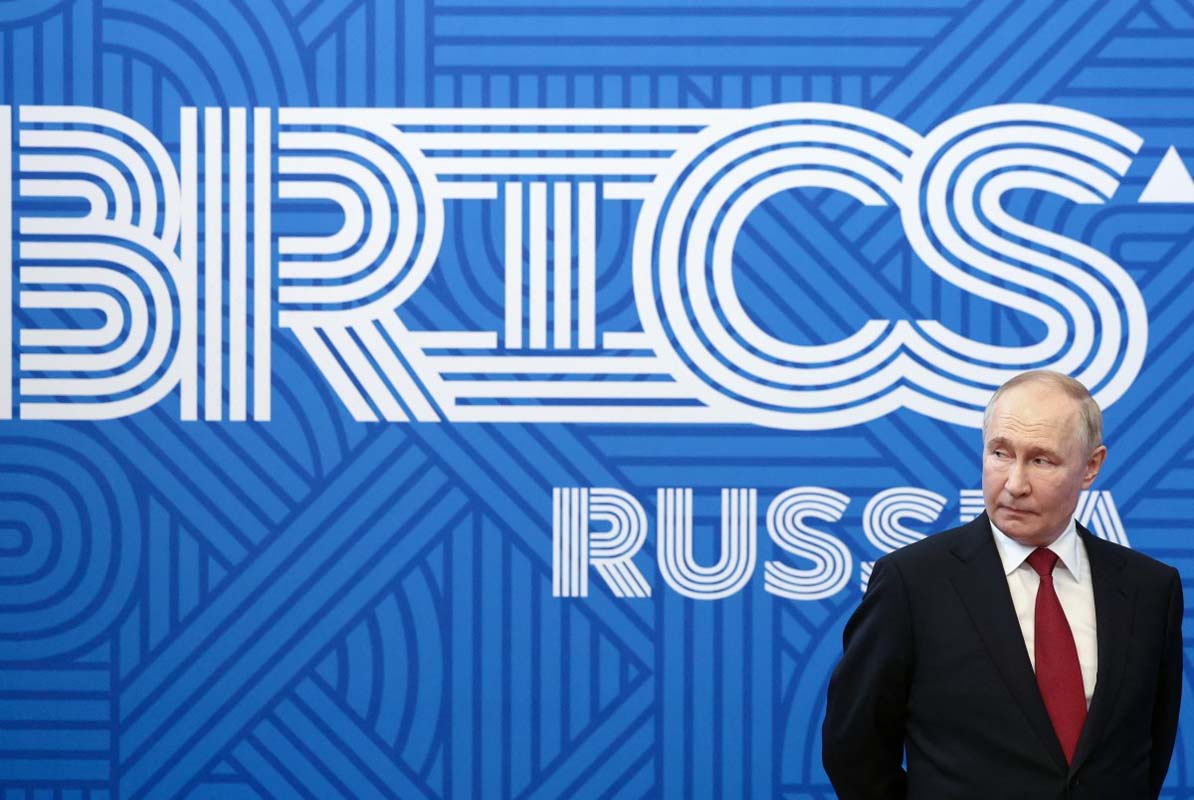
403
Sorry!!
Error! We're sorry, but the page you were looking for doesn't exist.
Russia’s fertilizer shipments to BRICS increase
(MENAFN)
Russian fertilizer exports to BRICS countries have increased by over 60% in the last three years, with plans to boost production further to satisfy rising demand within the bloc, Andrey Guryev, President of the Russian Association of Fertilizer Producers (RAFP), announced at the BRICS Business Forum in Rio de Janeiro.
Before 2022, the European Union was Russia’s largest fertilizer customer, making up about 28% of exports. However, due to the Ukraine conflict and subsequent EU and US sanctions, Russia has redirected much of its fertilizer trade toward BRICS nations and Africa. Guryev highlighted that half of Russia’s fertilizer exports now go to BRICS countries, with Brazil alone accounting for nearly 25%.
Guryev emphasized that Russian mineral fertilizers offer Brazilian farmers a significant competitive edge internationally, ensuring the safety and quality of their agricultural products. Brazil’s Deputy Foreign Minister for Trade, Laudemar Gonçalves de Aguiar Neto, confirmed that Brazilian agriculture, which feeds nearly a billion people, depends on a stable supply of Russian fertilizers.
In 2024, Russia produced more than 63 million tonnes of mineral fertilizers—a 6–7% increase from the previous year and the highest production since the mid-1980s. Over the past five years, Russia has invested close to $23 billion in expanding production capacity, with plans to continue growing exports and strengthening its market position.
Meanwhile, the EU recently imposed new tariffs on Russian nitrogen-based fertilizers like urea and ammonium nitrate as part of efforts to reduce reliance on Russian imports and support European producers struggling with high energy costs. These levies, escalating from €40–€45 per tonne to €430 by 2028, have raised concerns among European farmers about increased costs, potential food price hikes, and reduced agricultural output.
The EU’s agricultural lobby, Copa-Cogeca, pointed out that fertilizer prices in Europe surged by over 140% between 2021 and 2023, and that Russian fertilizers remain competitively priced due to established logistics.
BRICS, representing nearly half the world’s population and 40% of the global economy, includes Brazil, Russia, India, China, South Africa, Egypt, Ethiopia, Iran, the UAE, and Indonesia. The group recently expanded its membership options, introducing a partner country status following more than 30 applications at last year’s summit in Kazan, Russia.
Russian fertilizer exports to BRICS countries have increased by over 60% in the last three years, with plans to boost production further to satisfy rising demand within the bloc, Andrey Guryev, President of the Russian Association of Fertilizer Producers (RAFP), announced at the BRICS Business Forum in Rio de Janeiro.
Before 2022, the European Union was Russia’s largest fertilizer customer, making up about 28% of exports. However, due to the Ukraine conflict and subsequent EU and US sanctions, Russia has redirected much of its fertilizer trade toward BRICS nations and Africa. Guryev highlighted that half of Russia’s fertilizer exports now go to BRICS countries, with Brazil alone accounting for nearly 25%.
Guryev emphasized that Russian mineral fertilizers offer Brazilian farmers a significant competitive edge internationally, ensuring the safety and quality of their agricultural products. Brazil’s Deputy Foreign Minister for Trade, Laudemar Gonçalves de Aguiar Neto, confirmed that Brazilian agriculture, which feeds nearly a billion people, depends on a stable supply of Russian fertilizers.
In 2024, Russia produced more than 63 million tonnes of mineral fertilizers—a 6–7% increase from the previous year and the highest production since the mid-1980s. Over the past five years, Russia has invested close to $23 billion in expanding production capacity, with plans to continue growing exports and strengthening its market position.
Meanwhile, the EU recently imposed new tariffs on Russian nitrogen-based fertilizers like urea and ammonium nitrate as part of efforts to reduce reliance on Russian imports and support European producers struggling with high energy costs. These levies, escalating from €40–€45 per tonne to €430 by 2028, have raised concerns among European farmers about increased costs, potential food price hikes, and reduced agricultural output.
The EU’s agricultural lobby, Copa-Cogeca, pointed out that fertilizer prices in Europe surged by over 140% between 2021 and 2023, and that Russian fertilizers remain competitively priced due to established logistics.
BRICS, representing nearly half the world’s population and 40% of the global economy, includes Brazil, Russia, India, China, South Africa, Egypt, Ethiopia, Iran, the UAE, and Indonesia. The group recently expanded its membership options, introducing a partner country status following more than 30 applications at last year’s summit in Kazan, Russia.

Legal Disclaimer:
MENAFN provides the
information “as is” without warranty of any kind. We do not accept
any responsibility or liability for the accuracy, content, images,
videos, licenses, completeness, legality, or reliability of the information
contained in this article. If you have any complaints or copyright
issues related to this article, kindly contact the provider above.
Most popular stories
Market Research

- Motif AI Enters Phase Two Of Its Growth Cycle
- BTCC Exchange Announces Triple Global Workforce Expansion At TOKEN2049 Singapore To Power Web3 Evolution
- Moonbirds And Azuki IP Coming To Verse8 As AI-Native Game Platform Integrates With Story
- Pepeto Highlights $6.8M Presale Amid Ethereum's Price Moves And Opportunities
- Industry Leader The5ers Expands Funding Programs To U.S. Traders
- Hola Prime Expands Its Platform Ecosystem With Next-Gen Tradelocker




















Comments
No comment